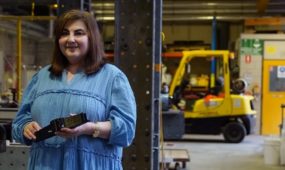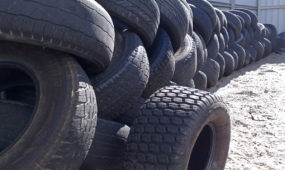Mobile system provides remote communication
Research & Development
A MOBILE phone system able to be operated in remote areas without a cellular network or internet access is being designed for the emergency services sector.

Sign up to receive notifications about new stories in this category.
Thank you for subscribing to story notifications.
Building telecommunication infrastructure in third world countries and remote locations has been a key issue for a number of years.
About 1.5 billion people in developing nations have no reliable phone service and up to 80 percent do not have access to internet.
Researchers at Flinders University in South Australia have developed a highly secure mobile system to assist emergency service units worldwide.
The Serval Project includes a free app for Android devices and a mesh extender. The extender, which runs on USB power, is a small box that acts as a Wi-Fi hub or radio transmitter.
Project leader Paul Gardner-Stephen said the device was intended as a simple and inexpensive remote communication alternative that could help people in the event of a crisis.
“It has Wi-Fi so your phone can talk to the box, and then the box can talk to other boxes by Wi-Fi but also by long-range VHF radio that can go many kilometres under ideal conditions,” he said.
“The combination of these things creates networks that can cover large areas and people without requiring any infrastructure at all.”
The aim of the project is to give the Serval mesh extenders to emergency relief teams in disaster situations so they can establish communication channels in remote areas.
Dr Gardner-Stephen said users who did not have the app in times of crisis could download it with the help of the extender and have it ready for immediate use.
“The combination that we’re doing is really quite unique in giving people the opportunity to build a communications network anywhere,” he said.
“We want this to be something that is easier to use than any one of these other communication apps that you can get on smart phones.
“For this to help as many people as it can in the world it needs to be free. To do it any other way is to put unnecessary and undesirable barriers between people.”
The software is completely open sourced and gives people the freedom to develop their own app to work with the system or build their own Serval mesh box.
The Institute of Electrical and Electronics Engineer’s (IEEE) Humanitarian Technology Challenge listed data connectivity and communication resources for isolated health offices as one of the top three solutions of reducing poverty and improving health services.
Serval first trialled its technology at the 610sq km Arkaroola Wilderness Sanctuary in the rugged Flinders Ranges, 600km north of South Australia’s capital Adelaide.
It was developed in conjunction with the New Zealand Red Cross with further support coming from the NICER project in Germany.
The project was one of five winners in the Pacific Humanitarian Challenge where it received AUD$279,000, which will be used to make technical improvements. It has also received grants from the United States and the Netherlands.
Countries in the Pacific region are highly susceptible to natural disasters including tropical cyclones, floods, and earthquakes.
The mobile phone system will extend testing to pilot the program in the Pacific over the next 18 months ahead of its first large scale rollout in the region.
Fiji, Vanuatu and the Solomon Islands have been shortlisted as potential destinations.
Arkaroola Wilderness Sanctuary Co-Director Margaret Sprigg said Arkaroola’s rugged mountainous terrain was the perfect location to test the Serval system.
“To have a system that can be field-based and portable for search-and-rescue scenarios is absolutely amazing,” she said.
“To be able to get some sort of antenna or base station up on a hill gives you access to so much more country. Its design is remarkable.”
Serval is also working with Toyota and Saatchi & Saatchi to fit off road vehicles with emergency communications hotspots.
Jump to next article



